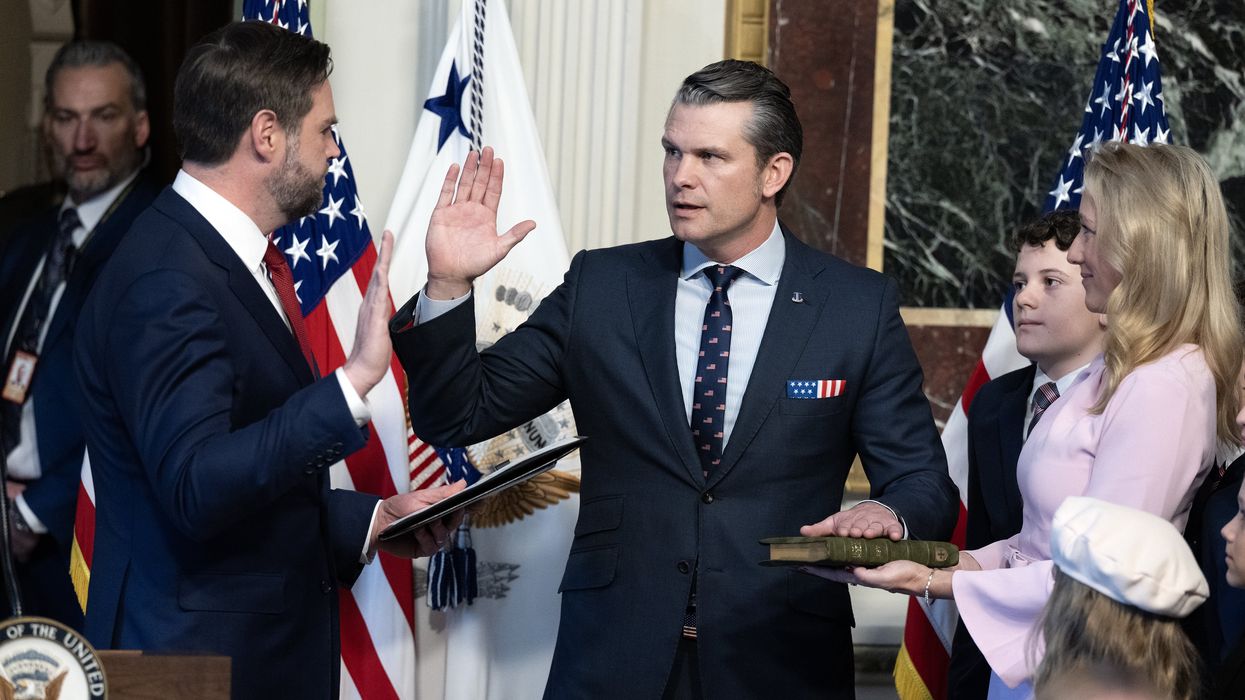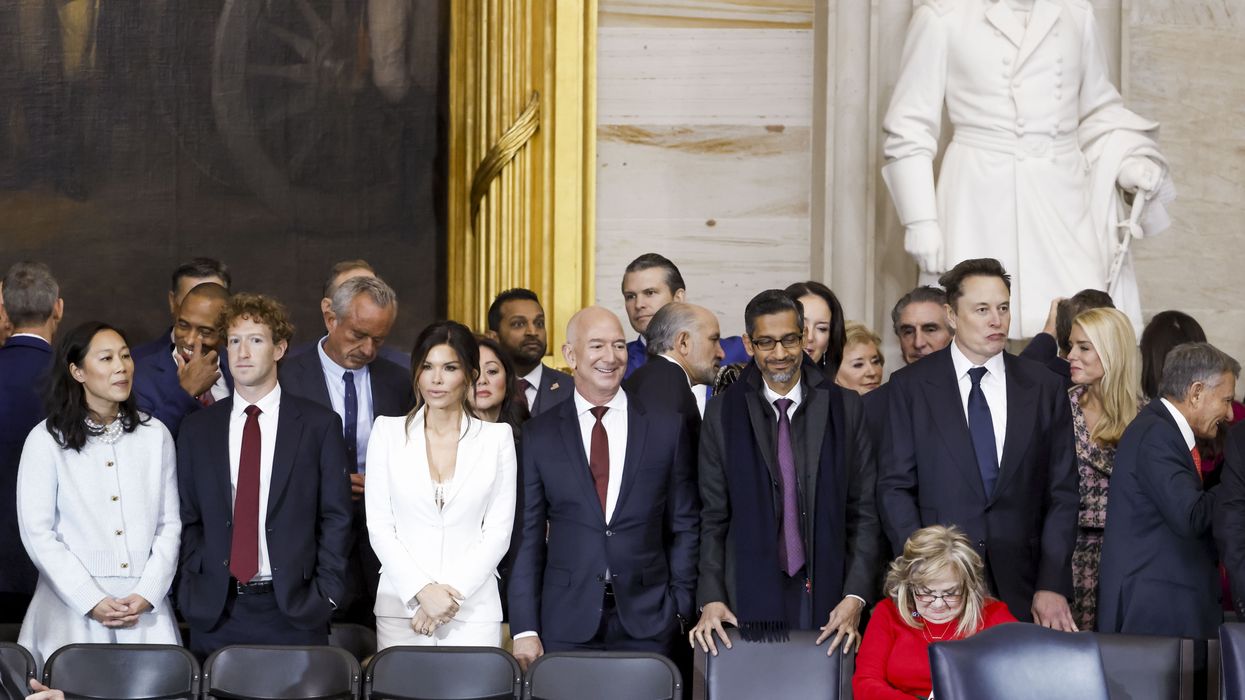After an eventful first week in office, JD Vance wrapped the week up with a bang of an interview on "Face the Nation."
Last weekend, Vice President Vance joined "Face the Nation" host Margaret Brennan, who drilled Vance on everything from the economy to immigration. Vance clapped back with polite yet cutting responses, and he defended Trump against some of her more accusatory queries.
If there was any lingering doubt that JD Vance wasn't vice presidential (or presidential) material, they have just been blown away. Here are the major takeaways from his electric interview on Sunday:
1. J.D. Vance defends Trump's cabinet picks

Bloomberg / Contributor | Getty Images
Brennan opened the interview with a barrage of questions that brought up concerns surrounding some of Trump's cabinet picks, specifically Pete Hegseth and Tulsi Gabbard.
Brennan began by questioning how effective Pete Hegseth could be as Secretary of Defence, given that he was confirmed with a tie in the Senate that VP Vance broke. Vance responded with a quick breakdown of all of the issues the military is currently facing. Vance argued that Hegseth's unpopularity in the Senate results from his being a disruptor.
Brennan also attacked Tulsi Gabbard, calling her unfit for the title of "Director of National Intelligence." Vance defended Gabbard, citing her formidable resume and strong character. Vance also discussed the corruption of our intelligence services, which out-of-control bureaucrats have weaponized against the interests of the American people. He expressed his belief that Gabbard would be the right person to reign in the corruption and return the National Intelligence Service to its intended purpose.
2. J.D. Vance explains how Trump's economic policies will lower consumer prices

Brandon Bell / Staff | Getty Images
Brennan pushed Vance on the economy, specifically questioning when prices for consumer goods would begin to fall. Vance explained that within the plethora of executive orders issued by Trump during his first week in office, many were aimed at bringing more jobs back into America, which will raise wages and lower prices. Other orders will boost energy production, which will reduce energy costs and decrease the costs of goods.
3. J.D. Vance sheds light on needed FEMA reforms

ROBYN BECK / Staff | Getty Images
Brennan drilled Vance on President Trump's proposed FEMA reforms, specifically regarding Trump's suggestion to send states a percentage of federal disaster relief funds so that they can quickly distribute aid rather than wait on federal action. While Brennen argued that FEMA has specialists and resources that states would not have access to, leaving people without aid, Vance argued that recent disasters, like Hurricane Helene, have proven that FEMA's current bureaucratic red tape deprived Americans of immediate aid when they needed it most.
4. J.D. Vance defends Trump's mass deportations

PIERRE-PHILIPPE MARCOU / Contributor | Getty Images
Vance defended Trump's decision to allow ICE to conduct raids into churches and schools against Brennen's criticisms, arguing that law enforcement should remove a dangerous criminal from a school or church, regardless of their immigration status. He also advocated for Trump's proposed changes to birthright citizenship to prevent illegal immigrants from abusing the constitutional amendment by having "anchor babies" on U.S. soil.
Vance also took a hard stance supporting Trump suspension of admitting Afghan refugees. Brennan argued that Afghan refugees were going through a thorough vetting process and were now being abandoned by the U.S. However, Vance cited the foiled terrorist attack in Oklahoma City during Trump's 2024 campaign that was orchestrated by an Afghan refugee, who was allegedly vetted by federal agents. The vetting process is clearly flawed, and it was a prudent decision to halt the admission of these refugees until further notice.
5. J.D. Vance insists that Trump will still reign in Big Tech

PIERRE-PHILIPPE MARCOU / Contributor | Getty Images
To wrap up the interview, Brennan questioned the Trump administration's stance on Big Tech given the attendance of the industry's biggest names at Trump's inauguration, including Meta CEO Mark Zuckerberg, Amazon CEO Jeff Bezos, Google CEO Sundar Pichai, Apple CEO Tim Cook, and TikTok CEO Shou Zi Chew. Vance assured Brennan that Trump is still resolved to curb the power and influence of Big Tech.

 JIM WATSON / Contributor | Getty Images
JIM WATSON / Contributor | Getty Images
 Joe Raedle / Staff | Getty Images
Joe Raedle / Staff | Getty Images AASHISH KIPHAYET / Contributor | Getty Images
AASHISH KIPHAYET / Contributor | Getty Images Harold M. Lambert / Contributor | Getty Images
Harold M. Lambert / Contributor | Getty Images